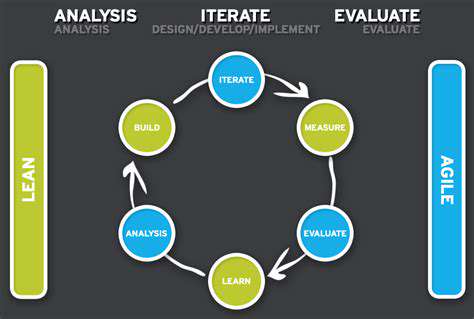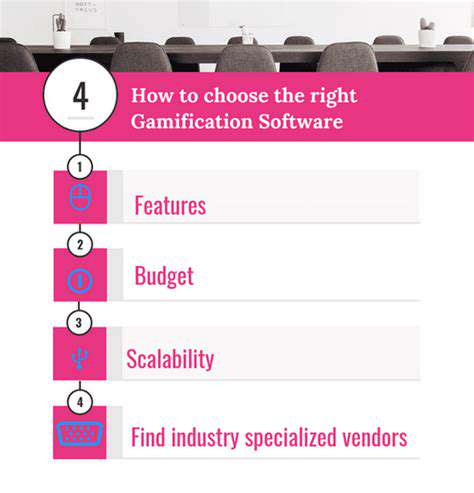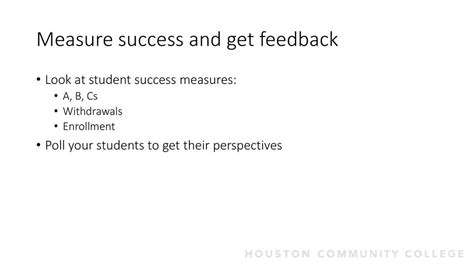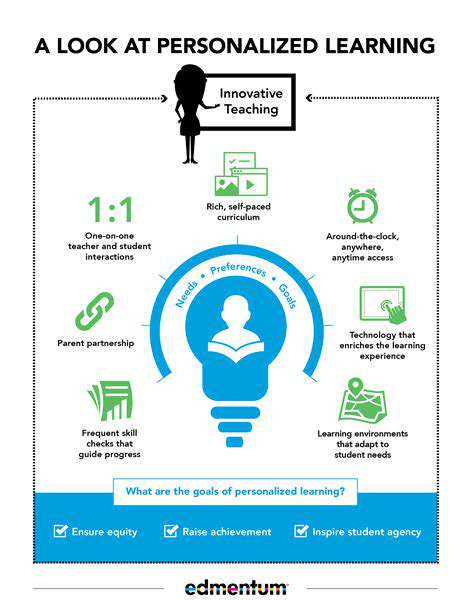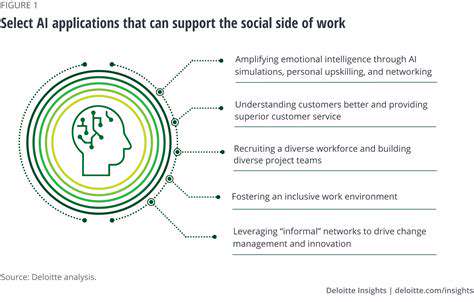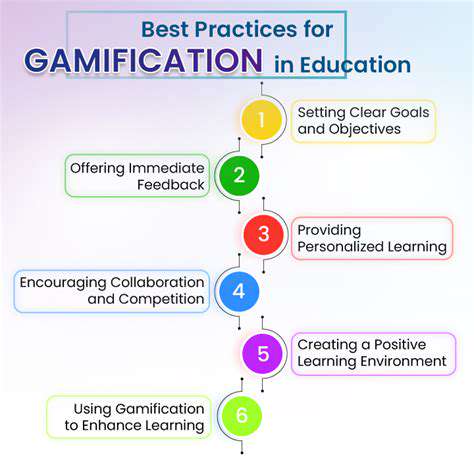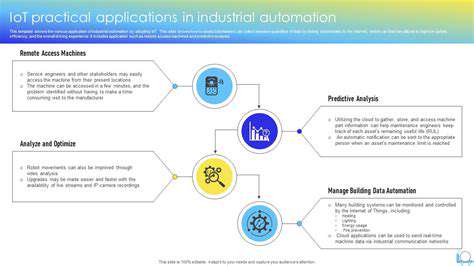Building Positive Habits through Gamification: Encouraging Consistency
Utilizing Challenges and Milestones
Setting Realistic Goals and Challenges
Establishing achievable goals is crucial for sustained engagement and motivation. Instead of overwhelming yourself with lofty ambitions, break down larger tasks into smaller, manageable challenges. This approach fosters a sense of accomplishment with each milestone reached, preventing feelings of being overwhelmed and ultimately contributing to a positive habit-building experience. Breaking down a large goal into smaller steps allows for consistent effort and frequent positive reinforcement, which is vital for long-term success. This incremental progress is more motivating than trying to conquer a massive task all at once.
Clearly defining the criteria for success for each challenge is also essential. This provides a tangible roadmap for achieving the desired outcome and allows for a clear understanding of how to measure progress effectively. For example, instead of simply aiming to exercise more, a more specific goal would be to walk for 30 minutes three times a week and clearly defining what constitutes a successful workout session.
Tracking Progress and Celebrating Milestones
Maintaining a record of your progress provides a visual representation of your achievements, allowing you to see how far you've come and reaffirm your commitment to the habit-building process. This tangible evidence of success is highly motivating and helps to cultivate a sense of pride and accomplishment. Using a journal, a spreadsheet, or a dedicated app can all serve as effective tools for tracking progress and visualizing the journey towards your goals. Regularly revisiting these records reinforces the positive association with the habit.
Celebrating milestones, no matter how small, is a powerful way to reinforce positive behavior and create a sense of accomplishment. Acknowledge your progress and reward yourself for achieving goals or completing challenges. This positive reinforcement reinforces the desired behavior and motivates you to continue the journey. This can be as simple as taking a short break, listening to your favorite music, or treating yourself to a small reward.
Creating Meaningful Rewards and Incentives
Rewards and incentives play a vital role in fostering motivation and engagement in the habit-building process. The key is to create rewards that are intrinsically motivating and align with your personal values. Instead of relying solely on external rewards, consider internal rewards, such as feeling proud of your accomplishment or enjoying the satisfaction of completing a task. This intrinsic motivation often proves more sustainable in the long run than solely relying on external rewards.
The rewards should also be relevant to your goals and aligned with the desired habit. For instance, if the goal is to read more, a reward could be purchasing a new book, attending a reading group, or simply enjoying a relaxing evening after a successful reading session. This alignment ensures that the reward is directly linked to the habit you are trying to establish.
Designing Challenges that Are Engaging and Fun
Making the process of building positive habits engaging and enjoyable is key to long-term success. Incorporating elements of fun and excitement can greatly enhance motivation and commitment. This could involve using gamified elements, such as points, badges, or leaderboards, to make the challenges more interactive and competitive. This type of approach can make the entire process more enjoyable, which significantly increases the likelihood of sustained engagement.
Integrating elements of creativity and personalization can further enhance engagement. Tailoring challenges to individual preferences, interests, and goals can make them significantly more motivating and relevant. For example, someone who enjoys photography could be challenged to take a picture each day for a week, while someone who loves cooking could be challenged to try a new recipe each week. This personalized approach fosters a sense of ownership and excitement.
Overcoming Setbacks and Maintaining Momentum
It's important to acknowledge that setbacks are inevitable in any habit-building journey. Instead of viewing setbacks as failures, treat them as opportunities for learning and adjustment. Analyze the reasons for the setback, identify any patterns, and adjust your strategy accordingly. This process of self-reflection and adaptation is critical for maintaining momentum and keeping the momentum going. Don't get discouraged if you miss a day or two. Instead, focus on getting back on track as quickly as possible and learn from the experience.
Maintaining momentum requires consistent effort and a proactive approach to challenges. Regularly reviewing your progress, celebrating milestones, and staying committed to the process are all crucial components of maintaining momentum. Staying connected with your goals and staying positive despite obstacles will be key to your success.
Customizing the Experience for Maximum Impact
Crafting Engaging Challenges
A key element of maximizing impact in gamified habit-building is designing engaging challenges. These challenges should be carefully crafted to align with the specific habit you're trying to foster. Instead of simply setting a goal of exercise more, consider a challenge that breaks down the goal into smaller, more manageable steps. For example, instead of aiming to exercise for an hour daily, a challenge might involve walking for 15 minutes three times a week, gradually increasing the duration and frequency over time. This approach fosters a sense of accomplishment with each small victory, making the overall habit more sustainable.
Effective challenges also incorporate a sense of progression and reward. Visual progress bars, badges, or points can provide a clear indication of progress toward the desired goal. This visual feedback loop reinforces positive behavior and motivates continued participation. Moreover, the rewards associated with completing challenges should be tailored to the individual, making them truly valuable and motivating.
Personalized Rewards and Recognition
Personalization is crucial for maximizing the impact of gamified habit-building. Generic rewards often fail to resonate with individuals, leading to decreased motivation. Instead, focus on creating personalized rewards that tap into the specific interests and motivations of the user. This could involve offering access to exclusive content, virtual items, or even real-world rewards linked to the habit being developed.
Recognition plays a vital role in reinforcing positive behavior. Publicly acknowledging achievements, even small ones, can foster a sense of community and inspire others to participate. Consider incorporating leaderboards, congratulatory messages, or social sharing options to amplify the impact of recognition.
Leveraging Leaderboards and Competition
Leaderboards can be powerful tools for motivating users to achieve their habit-building goals. The competitive element inherent in leaderboards can inspire individuals to push their limits and strive for improvement. However, it's essential to design leaderboards in a way that fosters healthy competition rather than fostering negativity or resentment. Clear guidelines and a focus on personal progress, rather than solely ranking, are key.
By structuring competition around specific milestones or challenges, you can create a more supportive and collaborative environment. This collaborative approach can inspire users to help each other stay on track and celebrate successes together, increasing the overall impact of the gamified experience.
Integrating Social Interaction and Support
Gamified habit-building can be significantly enhanced by integrating social interaction and support. Creating opportunities for users to connect, share progress, and offer encouragement can foster a sense of community and accountability. This social aspect can make the experience more meaningful and sustainable, as users feel supported and motivated by the collective effort.
Features like forums, chat groups, or social sharing options can facilitate this interaction. Encouraging users to connect with others who share similar goals can provide valuable support and motivation, making the habit-building process more engaging and effective.
Adapting to Individual Needs and Preferences
Gamified habit-building should be adaptable and responsive to individual user needs and preferences. Different people respond to different types of challenges, rewards, and recognition strategies. Therefore, the platform should offer various options and settings to cater to diverse preferences, allowing users to customize their experience to maximize their individual impact.
This adaptability involves offering different difficulty levels, customization options for rewards, and personalized feedback mechanisms. By tailoring the experience to individual needs, the platform can enhance user engagement and increase the likelihood of habit formation.
Tracking Progress and Providing Feedback
The ability to track progress and receive regular feedback is essential for maximizing the impact of any gamified habit-building program. Clear and concise visualizations of progress, whether through graphs, charts, or other visual aids, can provide a clear indication of success and motivation. Regular feedback, both positive and constructive, can help users understand their strengths and areas for improvement.
This feedback loop is crucial for reinforcing positive behavior and motivating continued participation. By providing regular and timely feedback, the platform can help users stay engaged, motivated, and on track to achieve their goals.
Read more about Building Positive Habits through Gamification: Encouraging Consistency
Hot Recommendations
- The Gamified Parent Teacher Conference: Engaging Stakeholders
- Gamification in Education: Making Learning Irresistibly Fun
- The Future of School Libraries: AI for Personalized Recommendations
- EdTech and the Future of Creative Industries
- Empowering Student Choice: The Core of Personalized Learning
- Building Community in a Hybrid Learning Setting
- VR for Special Education: Tailored Immersive Experiences
- Measuring the True Value of EdTech: Beyond Adoption Rates
- Addressing Digital Divide in AI Educational Access
- Preparing the Workforce for AI Integration in Their Careers
